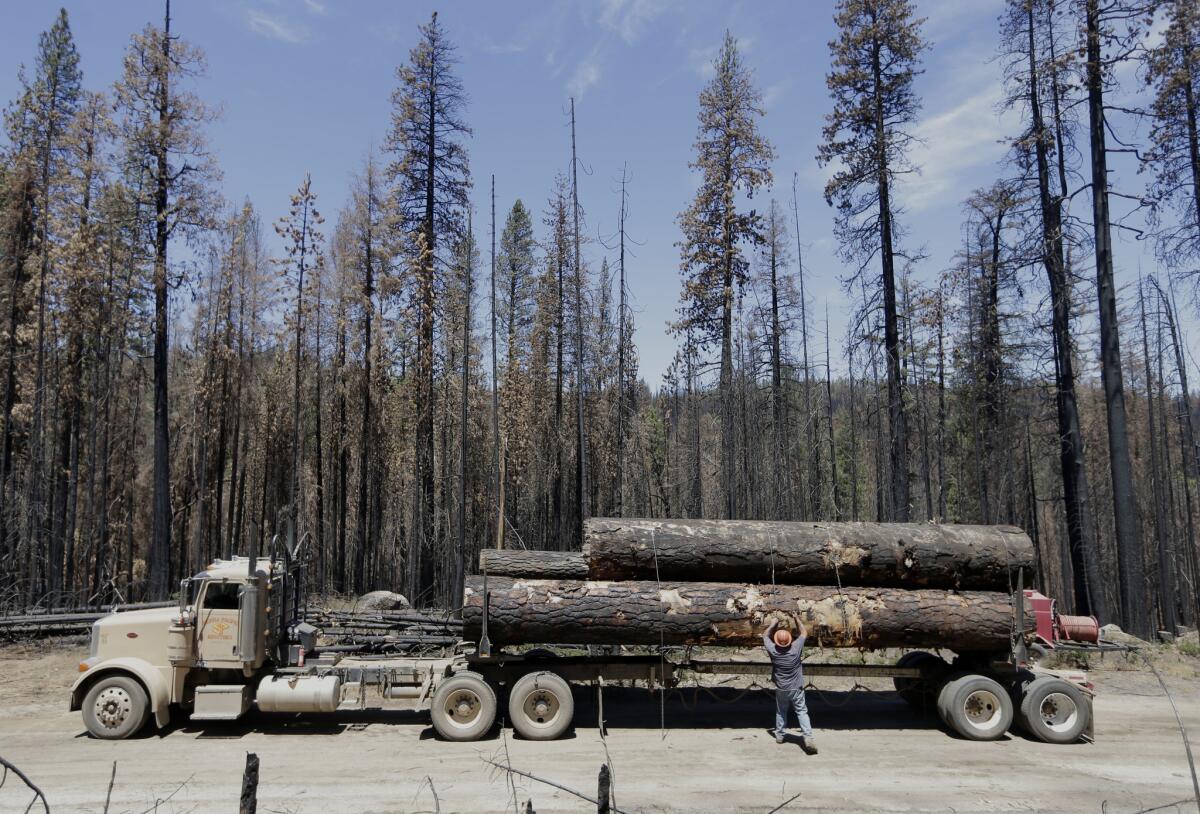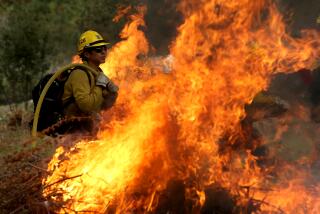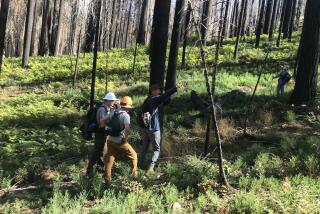Editorial: A logging plan even an environmentalist can love

It is almost inevitable that any logging after a disastrous forest fire will be protested by environmental groups. In the case of the Rim fire, though, managers of Stanislaus National Forest have come up with a reasonable compromise plan that pays plenty of attention to ecology and restoration while allowing the timber industry to take advantage of some of the bounty of trees blackened by the 257,000-acre blaze last year.
Those trees must be logged soon if they are to be useful. But to its credit, the U.S. Forest Service took the time to research the matter carefully and consult with all the interest groups — the construction industry, local residents, environmentalists and so forth.
The plan allows the clearing of 17,000 acres alongside forest roads. This must be done for safety; dead trees can and do fall across roads. In addition, because loggers use existing roads, it is the least environmentally damaging way to gather trees, and avoids clear-cutting large swaths of forest. Moreover, the Stanislaus, like all national forests, is intended to permit multiple uses, including logging and other commercial ventures, so this is well within its mandate.
In the forest backcountry, 15,000 acres will be logged in 150 locations, totaling 10% of the burn area within the forest or 6% of the total burn area, which also included private land and part of Yosemite National Park. Only 15 miles of road will be built for the logging, and all of it will be temporary, to be removed afterward. This is a far cry from ridiculous federal legislation, defeated in the Senate, that would have allowed nearly unfettered logging throughout the burned zone, even in Yosemite.
According to Forest Supervisor Susan Skalski, most of the acreage to be logged is far from virgin forest. It was burned in a 150,000-acre fire in 1987. Those areas were densely replanted with trees in plantation-style rows that were supposed to be thinned eventually, but never were, leading to conditions 25 years later that were ripe for swift-moving, catastrophic fire.
The bigger environmental concern about the vast Rim fire burn area is the plan for its recovery, which has not been drawn up yet. Any replanting should be done in clumps that mimic nature rather than in dense, regular stands that promote very hot, fast-moving fires. For that matter, only areas where erosion and landslide are safety issues, such as around residential, recreational and commercial zones, should be replanted. California forests evolved to burn and recover and in the process, decaying trees provide habitat for a multitude of wildlife and fertilizer for future growth. To the extent possible, the forest should be left to do what it naturally does best.
Follow the Opinion section on Twitter @latimesopinion
More to Read
A cure for the common opinion
Get thought-provoking perspectives with our weekly newsletter.
You may occasionally receive promotional content from the Los Angeles Times.






